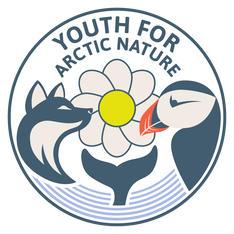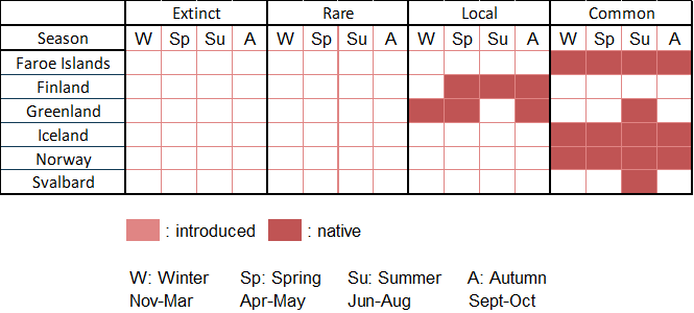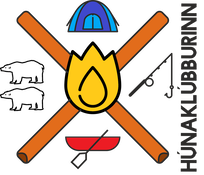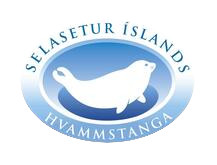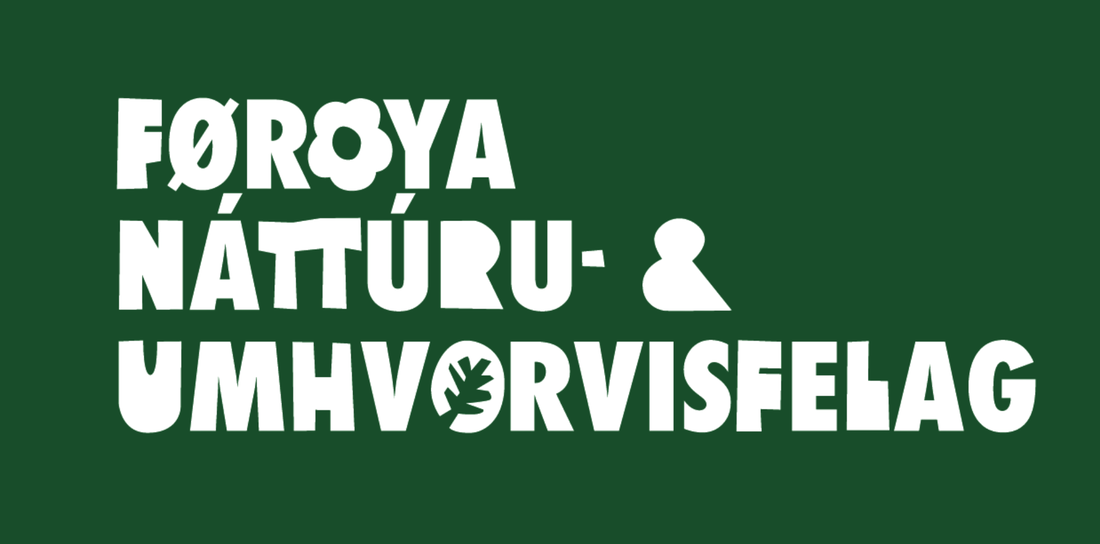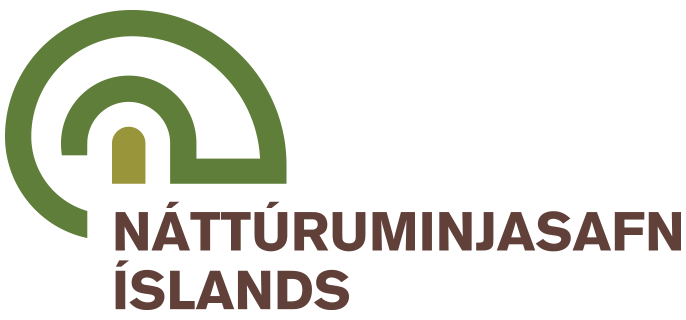|
Vulnerability: near-threatened (population trend unknown) Invasive: no Identification: easy (especially in males) Monitoring: medium |
|
What is it? The common eider is a large sea duck, and the largest duck in the East Atlantic Arctic, with individuals measuring 50cm up to 71cm in length for wingspans of 80cm to 100cm. It is also the heaviest East Atlantic Arctic duck, with an average weight of 2 kilograms. The female is rusty brown with a black scale pattern and a grey bill. The male is striking in breeding plumage: black underparts with a white large rump patch, white overparts with a rosy breast, an olive green nape, a black cap, and a grey-yellow bill. The legs are light yellow in both sexes. |
|
Where is it? The common eider is circumpolar, breeding on coasts in Greenland (except the North and Southeast), around Iceland, in southwestern Norway, southeastern Sweden, Finland, Svalbard, patchy areas in northern Siberia, northern Alaska, and northeastern and northwestern Canada. It winters in subarctic and Arctic seas, in southern Alaska, eastern Canada and the northeastern U.S, western Greenland, Iceland, Norway, the North Sea, the Baltic Sea, and southeastern Siberia. A subspecies of eider duck is endemic to the Faroe Islands, and it is present all year-long in the archipelago.
|
|
Interesting facts |
- Eider ducks have a life expectancy of 20 years, which is one of the longest life expectancies in ducks.
- Eiderdown refers to the soft feathers that common eiders build their nests with. It is extremely soft, and has been harvested after nesting season by humans, for example in Iceland and Norway, for hundreds of year. It is used to make pillows and duvets which are among the most expensive in the world. One duvet cover can cost up to 9,000€!
Pictures
- "Eider Duck" by dave-pemcoastphotos.com is licensed under CC BY 2.0.
References
- Birding Svalbard. (2021). Norwegian Ornithological Society. http://www.svalbardbirds.com/index.html
- BirdLife International (2022) Species factsheet: Somateria mollissima. Downloaded from http://www.birdlife.org on 01/06/2022.
- Common eider Somateria Mollissima. Greenland Institute of Natural Resources. https://natur.gl/arter/common-eider/?lang=en.
- Common eider Somateria Mollissima. NatureGate. https://luontoportti.com/en/t/511/eider.
- Hilmarsson, J. Ó. (2011). Icelandic Bird Guide: Appearance, Way of Life, Habitat (3rd ed.). Mal Og Menning.
- Olofson, S. (2012). Birds of the Faroe Islands. Visit Faroe Islands. www.visitfaroeislands.com.
- Sale, R. (2006). A complete guide to Arctic wildlife. Christopher Helm.
- Svensson, L., Mullarney, K., Zetterström, D., & Grant, P. J. (2010). Collins Bird Guide: The Most Complete Guide to the Birds of Britain and Europe (2nd ed.). Collins.
